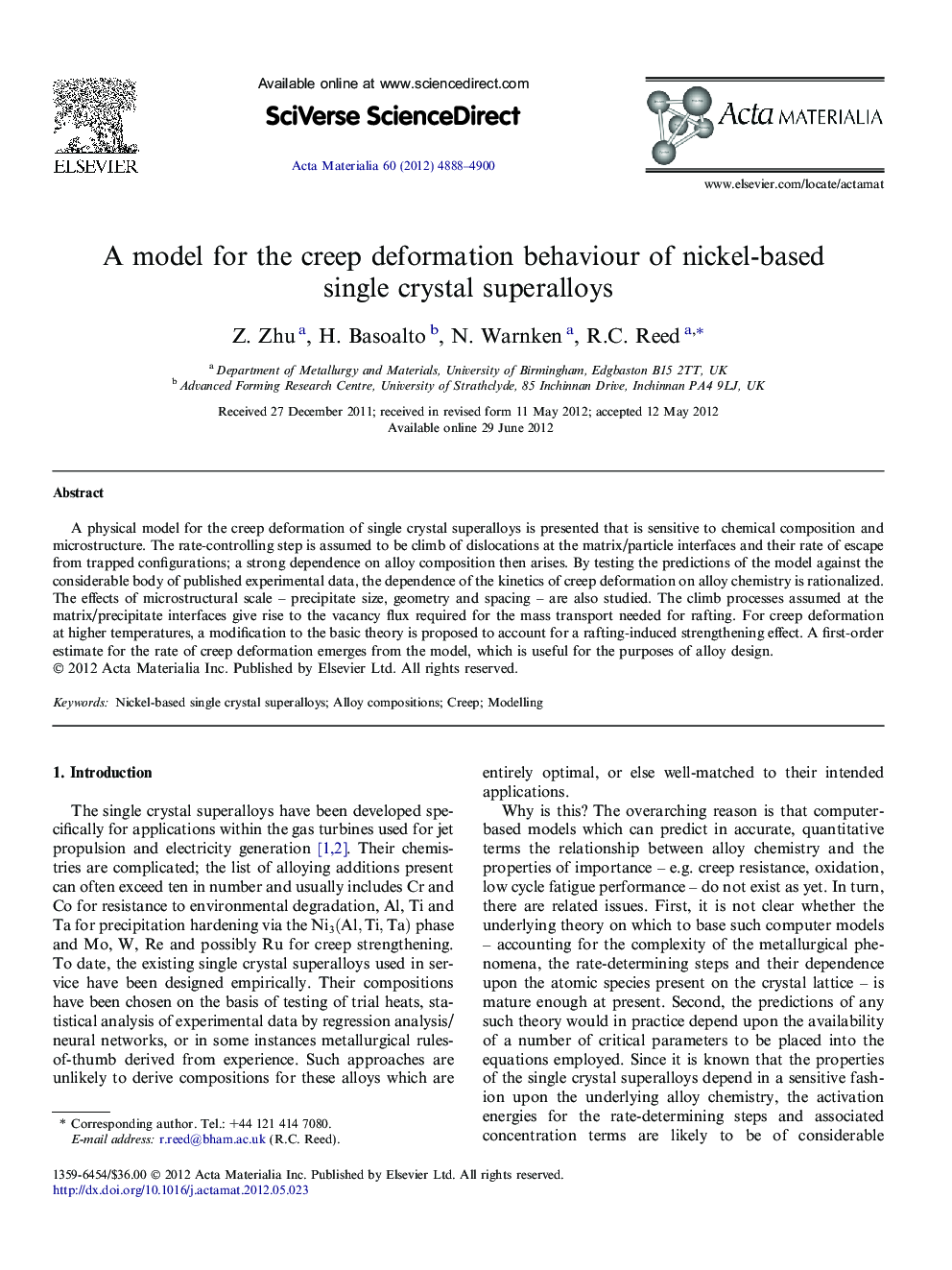| Article ID | Journal | Published Year | Pages | File Type |
|---|---|---|---|---|
| 1446943 | Acta Materialia | 2012 | 13 Pages |
A physical model for the creep deformation of single crystal superalloys is presented that is sensitive to chemical composition and microstructure. The rate-controlling step is assumed to be climb of dislocations at the matrix/particle interfaces and their rate of escape from trapped configurations; a strong dependence on alloy composition then arises. By testing the predictions of the model against the considerable body of published experimental data, the dependence of the kinetics of creep deformation on alloy chemistry is rationalized. The effects of microstructural scale – precipitate size, geometry and spacing – are also studied. The climb processes assumed at the matrix/precipitate interfaces give rise to the vacancy flux required for the mass transport needed for rafting. For creep deformation at higher temperatures, a modification to the basic theory is proposed to account for a rafting-induced strengthening effect. A first-order estimate for the rate of creep deformation emerges from the model, which is useful for the purposes of alloy design.
